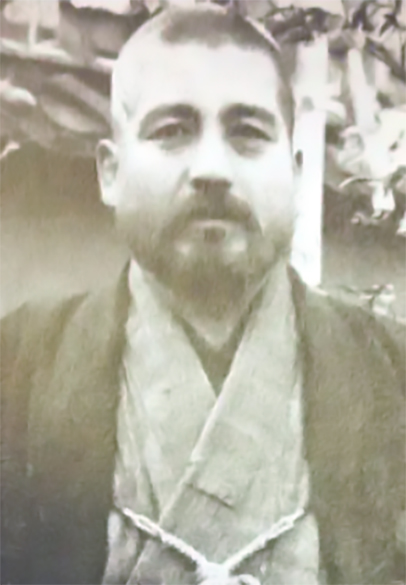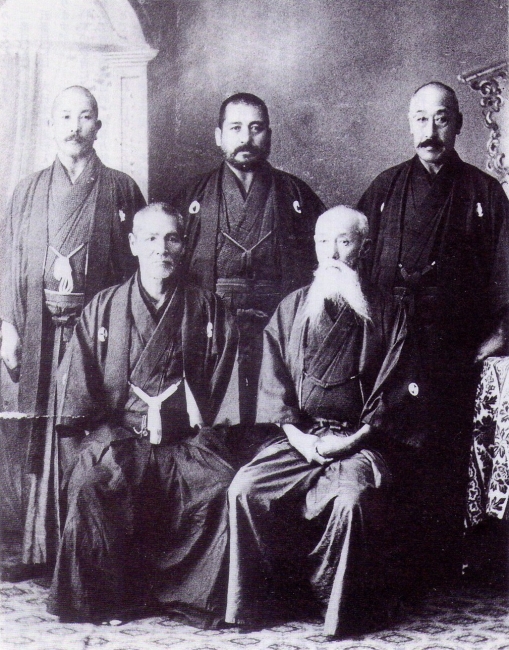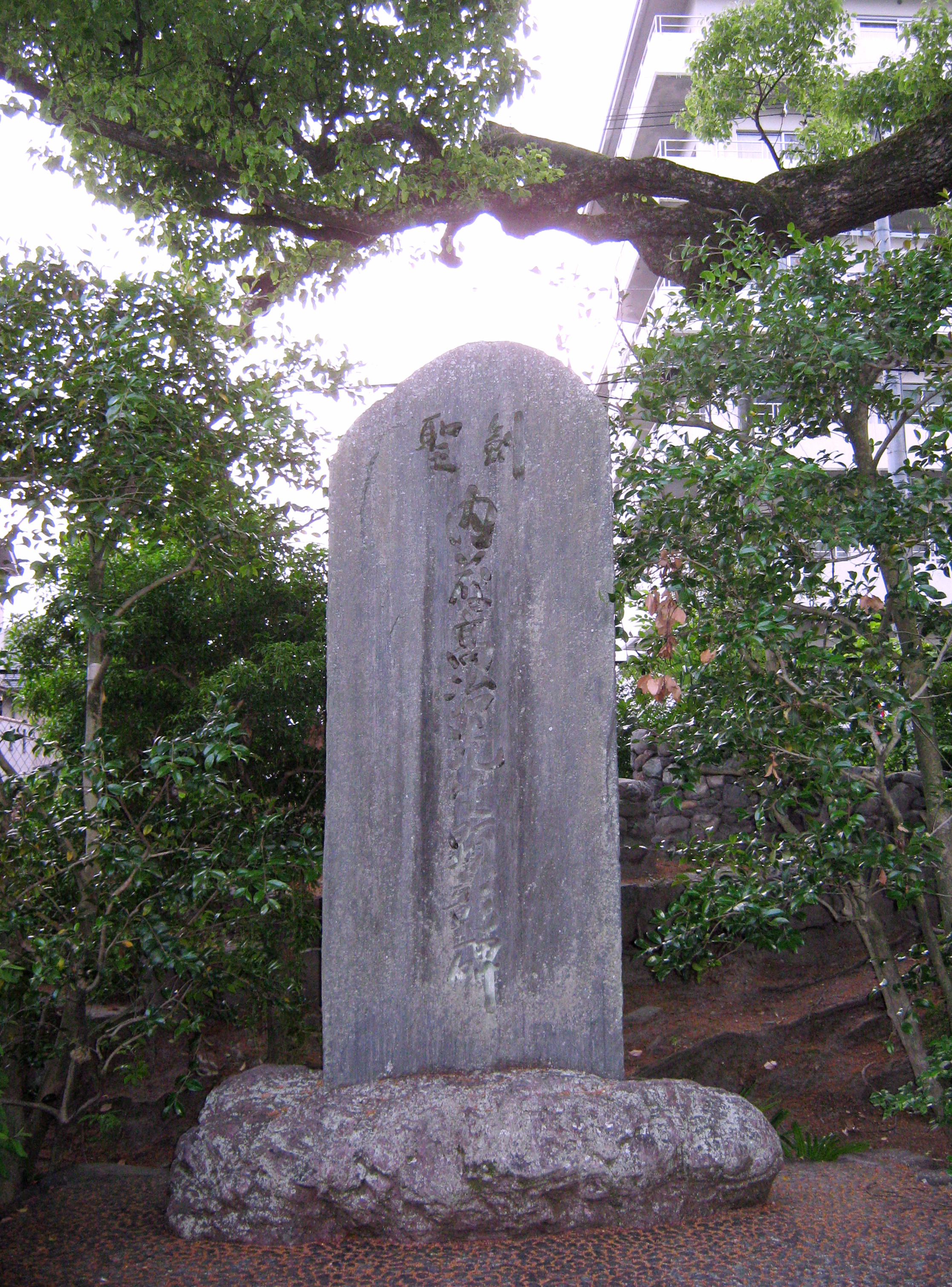1. Overview

Naitō Takaharu (内藤 高治Naitō TakaharuJapanese, December 16, 1862 - April 9, 1929) was a prominent Japanese martial artist and an influential figure in the development of modern kendo. A master of the Hokushin Ittō-ryū school of swordsmanship, Naitō dedicated his life to teaching and systematizing kendo, profoundly impacting its instruction within the Japanese Police force, military, and educational institutions. He was a leading figure alongside Takano Sazaburo, with their influence often encapsulated by the saying "Naito of the West, Takano of the East" (西の内藤、東の高野Nishi no Naitō, Higashi no TakanoJapanese). Naitō held the prestigious title of Hanshi (範士) in Kendo from the Dai Nippon Butoku Kai, and was known for his rigorous training methods, emphasis on fundamental techniques, and his deep understanding of kiai. His legacy is marked by his contributions to the standardization of kendo forms and his steadfast commitment to preserving the art's spiritual and technical integrity against perceived modernization and commercialization.
2. Early Life and Education
Naitō Takaharu was born on December 16, 1862, in Mito, as the sixth son of the Ichige family, a family of samurai serving the Mito Domain. His lineage was deeply rooted in martial traditions: his father, Ichige Takanori, was a master of archery (弓術kyūjutsuJapanese) for the Mito Domain, and his mother was the daughter of Watanabe Seizaemon, a master of Hokushin Ittō-ryū kenjutsu.
From 1869, Naitō began his early education, studying classical Chinese texts (漢籍kansekiJapanese), watermanship (水練suirenJapanese), and kenjutsu (剣術kenjutsuJapanese). At the age of 12, he formally entered the Tobukan Dojo (東武館道場Tōbukan DōjōJapanese) in Mito, where he studied Hokushin Ittō-ryū kenjutsu under the tutelage of Ozawa Torakichi. During this period, he formed a close friendship with his dojo peer, Monna Tadashi. In 1881, Naitō was adopted as the heir by his uncle, Naitō Gizaemon Masatoshi, a Mito domain samurai who had died in 1867 during an internal conflict within the domain. It was at this time that he formally adopted the name Naitō Takaharu.
3. Training and Early Career
In April 1883, Naitō Takaharu moved to Tokyo to further his martial arts training. He primarily practiced at the dojo of Sakakibara Kenkichi in Shitaya for approximately one year. The following year, he embarked on a period of extensive traveling and ascetic training (回国修行kaikoku shugyōJapanese) across various regions of Japan, including periods of mountain seclusion, which further refined his skills and mental fortitude. Upon his return to Tokyo, he actively challenged and reportedly defeated several prominent kendo instructors of the Tokyo Metropolitan Police Department (警視庁KeishichōJapanese), including Kawasaki Zenzaburo and Takano Sazaburo.
In May 1888, Naitō himself joined the Tokyo Metropolitan Police Department as a first-class patrolman (一等巡査ittō junsaJapanese). Through the arrangement of Shimoe Hidehachirō, he was assigned to the same police station as his fellow Tobukan dojo member and friend, Monna Tadashi. Around this time, Naitō's nephew, Ichige Tani, came to Tokyo seeking his guidance. Naitō encouraged his nephew to pursue a career in sumo wrestling, successfully persuading reluctant relatives to allow him to join the sport. Ichige Tani later rose to the rank of Yokozuna, adopting the ring name Hitachiyama Taniemon.
4. Military Service and Illness
In 1894, with the outbreak of the First Sino-Japanese War, the Tokyo Metropolitan Police Department ordered its kendo instructors (撃剣世話掛gekken sewa-gakariJapanese) to be dispatched to Korea for the protection of Japanese residents. Naitō Takaharu and Monna Tadashi were among those assigned to this duty. As he departed from Kobe Port, Naitō composed a poem expressing his readiness for battle as a samurai. However, shortly after arriving in Korea, he developed acute pleurisy (肋膜炎rokumakuenJapanese), which forced his early return to Japan, cutting short his military service.
5. Kendo Instruction and Development
Naitō Takaharu's career as a kendo instructor was extensive and highly influential. While serving with the Tokyo Metropolitan Police Department, he concurrently established his own dojo, the Yoshinkan (養真館YōshinkanJapanese), in Ushigomeharamachi. He also assumed the role of kendo instructor for the fencing club at Tokyo Senmon Gakko (東京専門学校Tōkyō Senmon GakkōJapanese), which is now Waseda University.
His most significant instructional role began in 1899 when he joined the Dai Nippon Butoku Kai in Kyoto. There, he served as the head professor of kendo at the Budo Senmon Gakko (武道専門学校Budō Senmon GakkōJapanese), an institution dedicated to training future martial arts instructors. In this capacity, Naitō played a pivotal role in nurturing and developing a new generation of kendo masters, including notable figures who would later achieve the rank of Kendo Judan (10th Dan), such as Mochida Moriji and Saimura Gorō. His teaching emphasized rigorous, traditional training methods focused on fundamental techniques.
6. Affiliation with Dai Nippon Butoku Kai
Naitō Takaharu's strong affiliation with the Dai Nippon Butoku Kai (大日本武徳会Dai Nippon Butoku KaiJapanese, Greater Japan Martial Virtue Society) marked a pivotal phase in his career. In March 1899, the main Butokuden (武徳殿ButokudenJapanese, Hall of Martial Virtues) building was completed in Kyoto. The Butoku Kai, seeking to strengthen its instructional faculty, appointed five prominent martial artists: Okumura Sakonta, Mihashi Kaneichiro, Naitō Takaharu, Sasaki Masayoshi, and Koseki Kyosei.
Naitō was deeply moved by a telegram he received from Kusunoki Masasue, a permanent council member of the Butoku Kai, which simply stated: "ミチノタメキタレMichi no Tame KitareJapanese" ("Come for the sake of the Way"). Inspired by this call, Naitō left behind all his established foundations in Tokyo and officially joined the Dai Nippon Butoku Kai headquarters in September of the same year. In 1897, prior to his full-time commitment, he had already been awarded the Seiren-sho (精錬証Seiren-shōJapanese), a certificate of excellence, by the Dai Nippon Butoku Kai, recognizing his advanced skill. As the chief professor of kendo at the Budo Senmon Gakko, Naitō dedicated himself to fostering future generations of kendo practitioners and masters, significantly shaping the direction of kendo instruction throughout Japan.
7. Contributions to Kendo Systematization
Naitō Takaharu made significant contributions to the standardization of kendo practices. In 1911, he was appointed as a chief investigative committee member (主査委員shusa iinJapanese) for the establishment of the Dai Nippon Teikoku Kendo Kata (大日本帝国剣道形Dai Nippon Teikoku Kendō KataJapanese, Great Japan Imperial Kendo Forms). This standardized set of forms played a crucial role in promoting the consistent practice of kendo in Japanese schools and universities under the auspices of the Dai Nippon Butoku Kai.
His pedagogical approach placed a strong emphasis on fundamental techniques. He rigorously advocated for repeated practice of basic drills such as kiri-kaeshi (切り返しkiri-kaeshiJapanese, cutting practice) and kakari-geiko (掛かり稽古kakari-geikoJapanese, attacking practice), believing these were essential for developing proper form and spirit. Naitō was also a highly skilled exponent of the use of kiai (気合kiaiJapanese, a powerful shout or yell expressing spirit and focus) in kendo. It is recorded that he effectively utilized this ability in his matches, influencing the psychological and spiritual aspects of combat.
8. Kendo Philosophy and Teaching Methods
Naitō Takaharu held strong beliefs regarding the essence of kendo, advocating for rigorous, traditional training methods over mere competitive prowess. He strongly disliked the increasing emphasis on kendo as a sport or a competition (競技化kyōgikaJapanese). His philosophy stressed that kendo should not be diluted by the pursuit of superficial victories, but rather focus on the cultivation of character, spiritual discipline, and the mastery of fundamental techniques.
He dedicated himself to teaching the basics thoroughly, believing that a solid foundation in kiri-kaeshi and kakari-geiko was paramount. Naitō's teaching methods were designed to instill not just physical skill, but also mental fortitude and a deep understanding of the spiritual dimensions of the art. He emphasized that true swordsmanship transcended the mere act of striking, encompassing the development of a strong and unwavering spirit, particularly through the effective use of kiai.
9. Notable Matches and Recognition

Naitō Takaharu was widely recognized for his exceptional skill, earning him the prestigious Hanshi title in kendo from the Dai Nippon Butoku Kai. He was regarded as one of the two most influential figures in the kendo world of his era, alongside Takano Sazaburo, leading to the adage "Naito of the West, Takano of the East."
One of his most legendary encounters was a sparring match against Takano Sazaburo at the 6th Butoku-sai Dai Enbukai (武徳祭大演武会Butoku-sai Dai EnbukaiJapanese, Great Martial Virtue Festival Demonstration) in May 1901, where the contest ended in a 1-1 draw. The judge, Mihashi Kaneichiro, later reflected on this bout as an unparalleled master match, stating that he had never witnessed a superior display of swordsmanship before or since. The English source further elaborates on a significant match between Naitō and Takano, likely referring to the same famous encounter. Despite not striking a single blow and being repeatedly hit on the kote (wrist guard) and men (protective helmet), Naitō was ultimately judged to have displayed a superior level of swordsmanship. This assessment was based on his ability to receive Takano's relentless attacks without exhibiting any signs of concern or hesitation, a testament to his profound mental composure and mastery of kiai.
10. Views on Kendo Modernization
Naitō Takaharu held a critical perspective on the modernization and perceived commercialization of kendo, particularly his opposition to the Shōwa Tenran Jiai (昭和天覧試合Shōwa Tenran JiaiJapanese, Showa Emperor's Cup Tournament). He believed that the increasing focus on competitive aspects, often at the expense of fundamental techniques and the art's spiritual depth, was detrimental to kendo's true essence.
He strongly opposed the holding of the Shōwa Tenran Jiai, viewing it as a move that would lead to the dilution and potential ruin of Japanese kendo. Despite his objections, he was eventually compelled to comply with the Imperial Household Agency's wishes, conveyed through officials like Saionji Hachiro, who emphasized that it was an Imperial command. Naitō famously lamented, "これで日本剣道は滅びたKore de Nihon Kendō wa horobitaJapanese" ("With this, Japanese Kendo is ruined"), expressing his profound concern that the event would compromise the cultural integrity and traditional values of the art he had devoted his life to. His staunch opposition highlighted his dedication to preserving kendo as a disciplined martial art rooted in spiritual and ethical principles, rather than a mere spectacle.
11. Personal Life and Family
Beyond his distinguished career in kendo, Naitō Takaharu's personal life had notable familial connections. Having been adopted by his uncle, Naitō Gizaemon Masatoshi, he took on the Naitō surname. He played a significant role in the life of his nephew, Ichige Tani. Naitō Takaharu actively encouraged Ichige Tani to pursue a career in sumo wrestling, despite initial opposition from other relatives. His encouragement proved influential, as Ichige Tani went on to become a successful professional sumo wrestler, eventually reaching the highest rank of Yokozuna under the ring name Hitachiyama Taniemon. This aspect of his personal life illustrates Naitō's broader influence and his ability to nurture talent, even outside the realm of kendo.
12. Death
Naitō Takaharu passed away on April 9, 1929. His death was attributed to a cerebral hemorrhage (脳出血nōshuketsuJapanese). Notably, his death occurred shortly before the scheduled date of the Shōwa Tenran Jiai, an event he had strongly opposed due to his concerns about the commercialization and perceived dilution of traditional kendo. His passing, so close to an event that symbolized his fears for kendo's future, underscored his unwavering dedication to his principles and his profound belief in the traditional integrity of the martial art.
13. Legacy and Commemoration

Naitō Takaharu's legacy in the kendo world is profound and enduring. His role as a central figure in the Dai Nippon Butoku Kai and as the head professor at the Budo Senmon Gakko was instrumental in shaping the next generation of kendo masters, including future Judan like Mochida Moriji and Saimura Gorō. His emphasis on fundamental techniques, rigorous training, and the spiritual aspects of kendo continues to influence practitioners to this day. His contributions to the systematization of kendo, particularly his involvement in the creation of the Dai Nippon Teikoku Kendo Kata, laid a crucial foundation for the widespread and consistent practice of the art.
His memory and contributions are commemorated through various means. A monument dedicated to him, known as the "Monument commemorating Kensei Naito Takaharu Sensei" (剣聖内藤高治先生顕彰碑Kensei Naitō Takaharu Sensei Kenshō HiJapanese, literally "Monument for Kendo Saint Master Naito Takaharu"), stands in Sakyo Ward, Kyoto City, within the Budo Center. This monument honors him as a "Kendo Saint" (剣聖kenseiJapanese), reflecting the high esteem in which he is held. Naitō Takaharu has also been depicted in popular culture, notably appearing in the manga series Ryū-RON- by Motoka Murakami and its 1995 television drama adaptation by NHK, where he was portrayed by Kinnosuke Yorozuya. These depictions help to keep his story alive and introduce his significance to new generations.